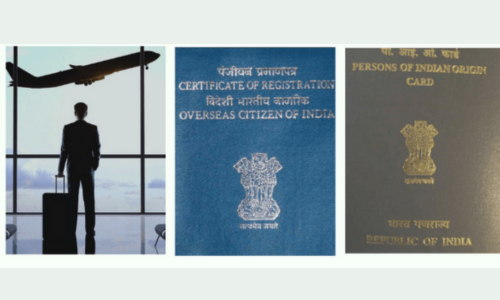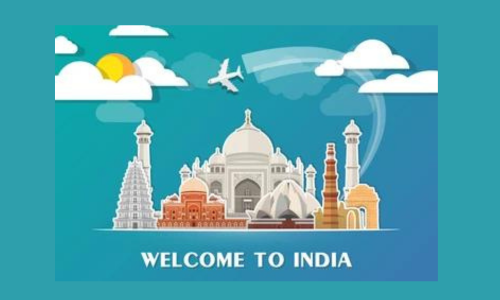Navigating the world of international travel and residency can be quite an adventure, especially for people with Indian ancestry who live abroad. If you’ve ever wondered about the difference between PIO and OCI, you’re in the right place!
In this article, we will discuss about...
Introduction
India’s rich cultural heritage has spread its roots far and wide, with many people of Indian origin residing outside the country. For these individuals, the Indian government offers two specific cards – PIO (Person of Indian Origin) and OCI (Overseas Citizen of India). But what exactly are these cards, and how do they differ? Let’s dive in and explore the comparison between PIO and OCI.
Understanding PIO and OCI
What is PIO?
The Person of Indian Origin (PIO) card was introduced in 1999 as a long-term visa for individuals of Indian origin. It provided certain privileges for visiting India, including visa-free entry and some economic and educational benefits.
What is OCI?
In 2005, the Indian government introduced the Overseas Citizen of India (OCI) card, offering more comprehensive benefits compared to the PIO card. The OCI card was designed to simplify travel and provide more extensive rights and privileges to individuals of Indian descent who are citizens of other countries.
Consult CA Arun Tiwari for more information at 📞 8080088288 or cs@aktassociates.com
Key Differences Between PIO and OCI
1. Eligibility
PIO Eligibility
- PIO cards were available to individuals of Indian origin up to the fourth generation.
- Spouses of PIO cardholders were also eligible.
OCI Eligibility
- OCI cards are available to individuals who were once Indian citizens or are descendants of an Indian citizen up to the fourth generation.
- Spouses of OCI cardholders are eligible, but only if the marriage has been registered and subsisted for at least two years.
2. Duration of Stay
PIO Duration
- PIO cardholders were allowed to stay in India for up to 15 years without the need for a visa.

OCI Duration
- OCI cardholders have a lifelong visa to stay in India without the need for renewal.
3. Benefits and Privileges
PIO Benefits
- Visa-free travel to India for 15 years.
- Exemption from registering with the Foreigners Regional Registration Office (FRRO) for stays up to 180 days.
- Parity with NRIs in financial, economic, and educational fields except in the acquisition of agricultural property.

OCI Benefits
- Lifelong visa-free travel to India.
- Exemption from FRRO registration for any length of stay.
- Parity with NRIs in almost all economic, financial, and educational matters, including the acquisition of agricultural property.
- Ability to work in India without requiring a special permit.
- Equal treatment with Indian citizens in domestic airfare tariffs and admission fees to national parks and wildlife sanctuaries.

4. Conversion of PIO to OCI
With the introduction of the OCI card, the Indian government announced that existing PIO cardholders could convert their PIO cards to OCI cards. This was a significant move to streamline the process and unify the benefits under one single category.
5. Application Process
PIO Application
- The application process for PIO cards was somewhat less streamlined and required more documentation compared to OCI applications.
- Processing times were generally longer.
OCI Application
- The OCI application process is more streamlined with clear guidelines and online application options.
- Processing times have improved, making it easier for applicants to obtain their OCI cards.
Advantages of OCI Over PIO
The OCI card has several advantages over the old PIO card, making it the preferred option for many:
- Lifelong Validity: Unlike the 15-year validity of the PIO card, the OCI card offers lifelong validity, making it more convenient for frequent travelers.
- Comprehensive Benefits: The OCI card provides more extensive benefits, including the ability to work in India and parity with Indian citizens in various economic and educational matters.
- Ease of Application: The streamlined application process for OCI cards is a significant improvement, reducing the hassle for applicants.
FAQs About PIO and OCI
1. Can I still apply for a PIO card?
No, the Indian government has discontinued the PIO card scheme. However, you can apply for an OCI card, which offers more benefits and lifelong validity.
2. Do I need to renew my OCI card?
The OCI card itself does not need renewal. However, you must get a new OCI card when you renew your passport if you are below 20 or above 50 years of age.
3. Can I hold both a PIO and an OCI card?
No, individuals cannot hold both cards simultaneously. Since the PIO card scheme has been discontinued, existing PIO cardholders are encouraged to convert their PIO cards to OCI cards.
4. What happens if my PIO card expires?
Existing PIO cardholders should convert their cards to OCI cards as soon as possible. The Indian government has set up a straightforward process for this conversion.
5. Can OCI cardholders buy property in India?
Yes, OCI cardholders can purchase non-agricultural property in India and enjoy parity with NRIs in real estate transactions.
6. Are there any restrictions for OCI cardholders?
OCI cardholders are not allowed to vote in Indian elections, hold government jobs, or acquire agricultural land. They also cannot apply for an Indian passport.
Conclusion
The differences between PIO and OCI are significant, with the OCI card offering more extensive and valuable benefits for individuals of Indian origin. The Indian government’s move to unify these schemes under the OCI category has simplified the process and provided a more streamlined experience for applicants.
We hope this comparison has clarified the distinctions between PIO and OCI. If you have any questions or experiences to share, please leave a comment below. We’d love to hear from you!


